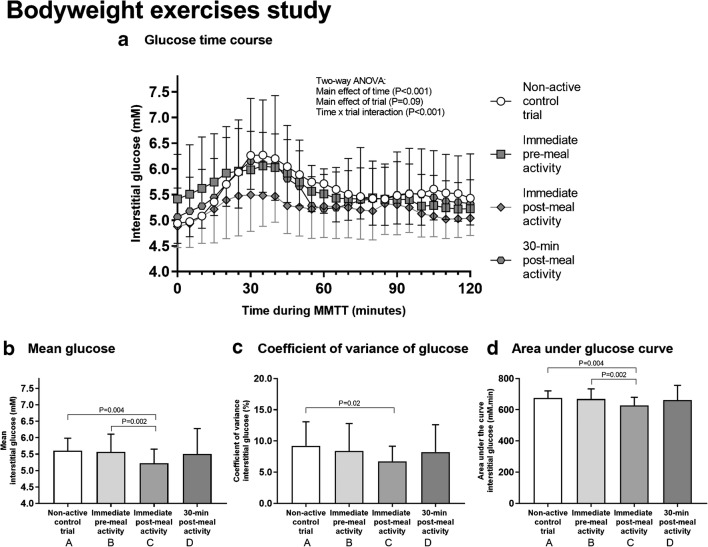Fig. 4.
The effect of bodyweight exercise on glucose control. During each trial, a 500-kcal breakfast meal was provided. The trials were identical except that participants completed a bout of bodyweight exercises (3 sets of 10 squats, push-ups, lunges, and sit-ups) either immediately before (trial B), immediately after (trial C), 30 min after (trial D), or more than 2 h after (control; trial A) meal ingestion. Interstitial glucose concentrations were measured for 2 h postprandially (a). The mean glucose (b), coefficient of variation of glucose (CV; c), and area under the glucose curve (AUC; d) during the 2-h postprandial period were calculated. One participant’s data was lost in trials A and C due to the failure of the CGM sensor. The missing data was inserted using regression from the remaining 15 participants’ observations. Two-way ANOVA showed a significant main effect of time (P < 0.001) and a time × trial interaction (P < 0.001) for glucose time-course responses to meal ingestion (a). One-way ANOVA showed a main effect of trial for mean glucose (P < 0.01; b), and post hoc tests found significant differences between immediate post-meal exercise and control (P = 0.004) and pre-meal exercise (P = 0.002). There was also a main effect of trial for CV (P = 0.03; c), with post hoc tests revealing that immediate post-meal exercise was significantly different to control (P = 0.02). A main effect of trial was also found for AUC (P = 0.005; d), and post hoc tests revealed significant differences between immediate post-meal exercise and control (P = 0.004) and pre-meal exercise (P = 0.002). Data points represent mean ± SD from N = 16

